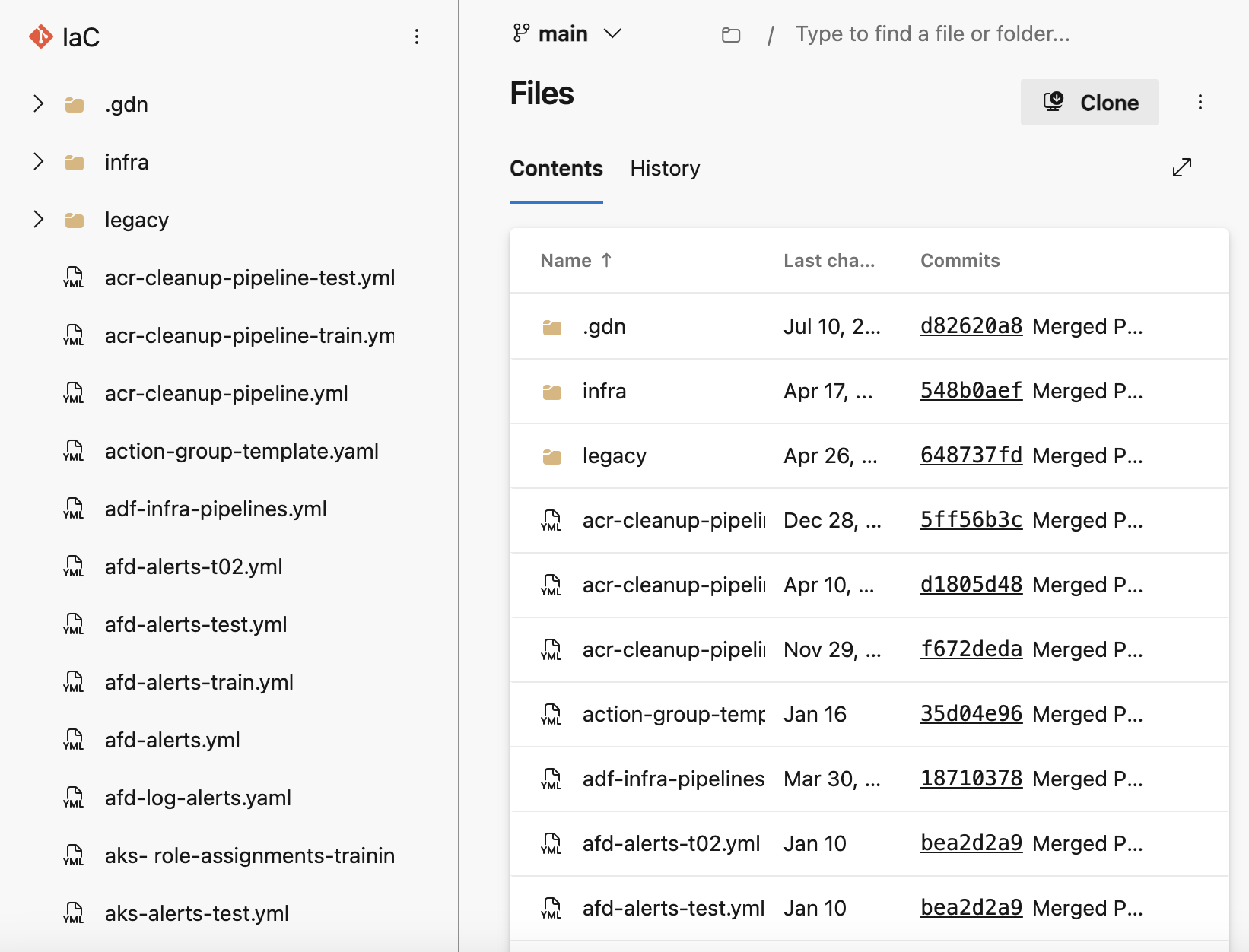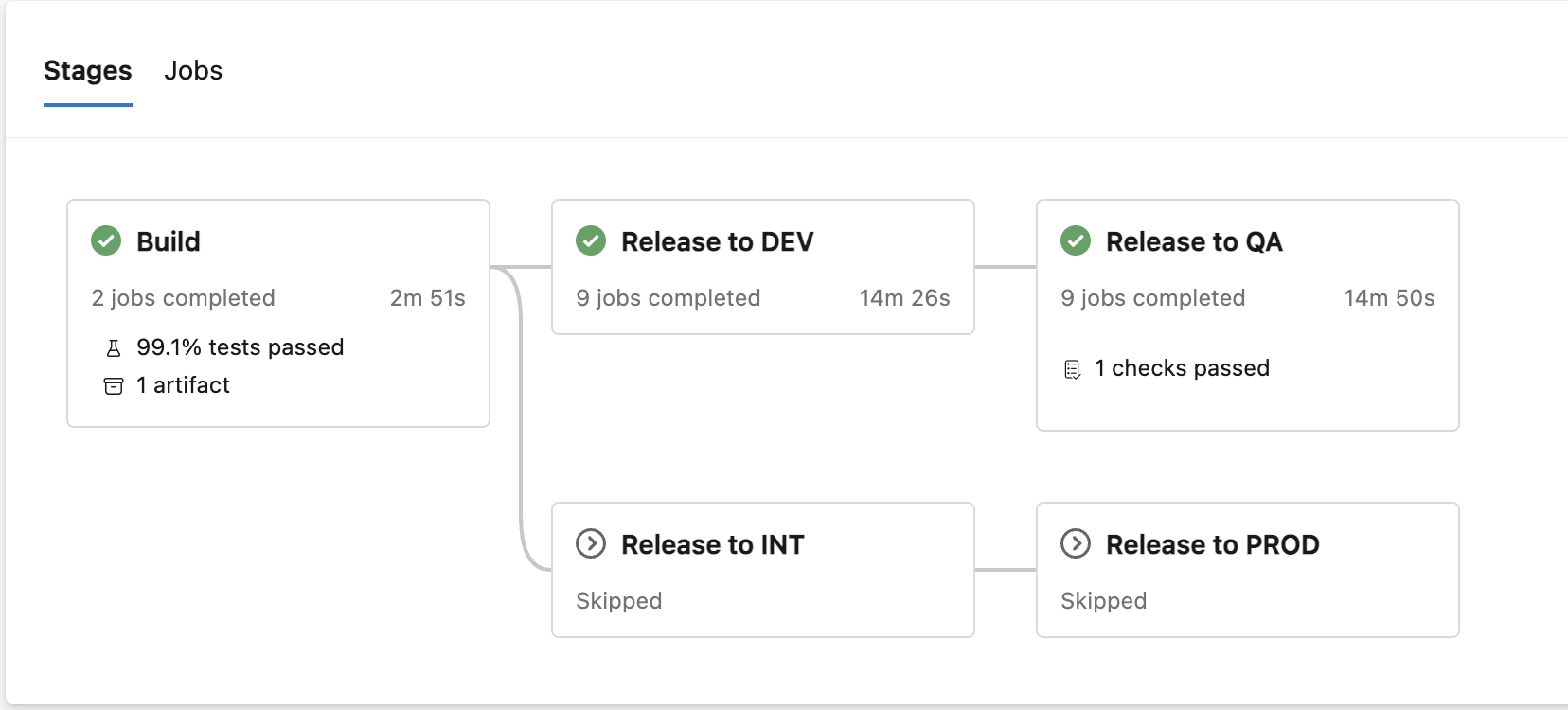Infrastructure as Code (IaC)
Infrastructure as Code (IaC) revolutionizes the management and provisioning of IT infrastructure by enabling the automation and codification of infrastructure configurations. With IaC, organizations can define and deploy infrastructure resources programmatically, leveraging version-controlled code to ensure consistency, repeatability, and scalability across environments.
Get an IaC quote
Infrastructure as Code (IaC) vs Configuration as Code (Cac)
While both Infrastructure as Code (IaC) and Configuration as Code (CaC) involve managing infrastructure and configurations using code, they differ in scope, purpose, and focus. IaC primarily deals with provisioning and managing infrastructure resources, while CaC focuses on configuring and managing application settings and dependencies.
Why
The primary purpose of IaC is to automate the provisioning and management of infrastructure resources. By defining infrastructure configurations in code, teams can achieve consistency, repeatability, and scalability in deploying and managing infrastructure, which leads to improved efficiency, reduced manual errors, and faster development and deployment cycles.
Scope
IaC typically deals with defining and managing the underlying infrastructure resources needed to deploy and run applications. This includes specifying compute instances, networking components, storage resources, security settings, and other infrastructure elements required to support application workloads.
Tools
Common tools and technologies used for IaC include HashiCorp Terraform, AWS CloudFormation, Google Cloud Deployment Manager, and Azure Resource Manager. These tools provide declarative or imperative syntax for defining infrastructure configurations and managing infrastructure resources. A notable difference being that Terraform is cloud agnostic while the other mentioned tools are specific to their respective Cloud Service Provider (CSP).
Adoption and Migration Strategies
Transitioning to Infrastructure as Code (IaC) requires careful planning and execution to ensure a successful adoption and migration process. Our IaC adoption and migration strategies guide provides a structured approach for organizations looking to embrace automated infrastructure management. From assessing existing infrastructure environments to identifying migration candidates and establishing pilot projects, our guide offers actionable steps to facilitate a smooth transition to IaC. Additionally, we provide guidance on training teams on IaC concepts and tools and scaling IaC implementations across the organization, empowering businesses to reap the benefits of automated infrastructure management efficiently.
Send me the guidePilot Project Implementation
Establish pilot projects to validate IaC adoption and migration strategies in real-world scenarios. Our pilot project implementation services define project scope, objectives, and success criteria, select representative infrastructure environments for migration, and execute migration tasks in a controlled environment. By piloting IaC initiatives, organizations can validate the effectiveness of their strategies and mitigate risks before scaling up implementation across the organization.
Infrastructure Assessment and Analysis
Conduct a thorough assessment of existing infrastructure environments to evaluate their suitability for transitioning to Infrastructure as Code. Our infrastructure assessment and analysis services examine factors such as infrastructure complexity, dependencies, and compatibility with IaC principles, providing insights into the readiness of infrastructure environments for migration to IaC.
Candidate Selection for IaC Migration
Identify suitable candidates for Infrastructure as Code migration based on predefined criteria and business objectives. Our candidate selection process evaluates factors such as application criticality, workload characteristics, and infrastructure requirements, enabling organizations to prioritize migration efforts and maximize the impact of IaC adoption.
Best Practices and Patterns

-
Declarative vs. Imperative
Favor declarative approaches over imperative ones. Declarative IaC describes the desired end state of the infrastructure, allowing the system to determine how to achieve that state. This promotes idempotence and reduces complexity.
-
Modularity and Reusability
Design infrastructure code in a modular and reusable manner. Break down infrastructure components into smaller, composable modules that can be shared and reused across projects. This reduces duplication, promotes consistency, and simplifies maintenance.
-
Parameterization
Parameterize infrastructure configurations to make them more flexible and adaptable across different environments. Use variables and parameters to abstract out environment-specific settings, such as resource names, sizes, and configurations.
-
Version Control
Store infrastructure code in version control systems (e.g., Git) to track changes, facilitate collaboration, and enable rollback to previous states if needed. Follow best practices for branching, tagging, and code review to ensure the reliability and auditability of infrastructure changes.
-
Documentation
Maintain comprehensive documentation for infrastructure code to improve understanding, facilitate onboarding, and ensure compliance with organizational standards. Document the purpose, usage, inputs, outputs, and dependencies of infrastructure components.
-
Testing
Implement automated testing for infrastructure code to validate correctness, reliability, and security. Conduct unit tests, integration tests, and validation tests to catch errors early, prevent regressions, and ensure consistent behavior across environments.
Using GitOps to provision
GitOps streamlines the provisioning and management of infrastructure by using Git repositories as the central hub for defining and maintaining infrastructure configurations. Infrastructure changes are made through version-controlled code changes, enabling automation and ensuring consistency across environments. The benefits of this approach to name just a few:
Version Control
Consistency and Reproducibility
Collaboration and Governance
Automation and Continuous Delivery
The deliverables
Below are some sample deliverables our team offers to our clients, tailored according to the selected approach:

Infrastructure as Code - ARM Templates
Our client had some Azure ARM templates already and wanted our help to make the finish line. Our team of experts, rolled up their sleves and helped to codify the remaining pieces of the cloud footprint.

GitOps in Azure ADO
GitOps ensures consistency and reproducibility in infrastructure deployments by using declarative configuration files stored in Git. With automated pipelines triggered by Git events, infrastructure changes are applied consistently across environments, reducing the risk of configuration drift and manual errors.
Automation and Continuous Delivery
By integrating Git repositories with automated pipelines, GitOps enables continuous delivery of infrastructure changes, allowing teams to deploy updates rapidly and frequently. Automation reduces manual intervention, accelerates the deployment process, and increases the agility of infrastructure management.
Embracing a Shift Left mindset ensures that Security is included in discussions from the outset.
Governance occurs at every phase of the infrastructure development process, not just at the conclusion.
Automated evidence collection streamlines the attestation process, eliminating the need for manual intervention.
Environments in minutes not months.
